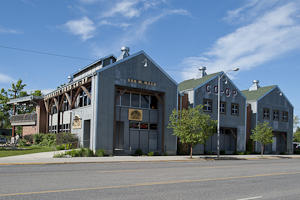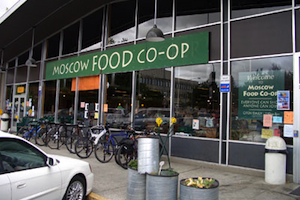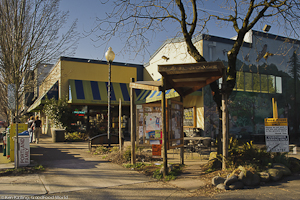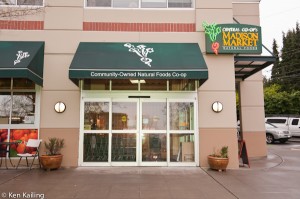

Why Global Capitalism Isn’t Better
Every day we see examples showing how global capitalism is leading the vanguard of business and job growth, increased shareholder value, and profit-making.
Anyone who has taken even a basic business class will recall that the primary goal of business is to generate profits. And the goal of virtually every publicly-owned company has always been to maximize shareholder value by generating as much profit as possible.
One of the best-known examples of maximizing shareholder value and generating as much profit as possible – without regard for patient healthcare – is the huge increase in February 2016 of the price of a life-saving drug called Daraprim, which went up 5000% when Turing Pharmaceuticals (led by then CEO, Martin Shkreli) purchased it. The price of a single pill went from $13.50 to $750, and a full bottle that cost $1,700 went up to $75,000.
Is capitalism as an economic system to blame? Capitalism is a system based on private ownership of the means of production and their operation for profit. It’s clear we live in an overwhelmingly private, profit-driven, competitive market economy, in which our government is dominated by the power of capital.
You’ll never see a profit-driven corporation touting good health, access to good food, or even safe housing and clean water as their ultimate goals; unless, that is, there is a way to make a profit from them.
While there have been moves by big business to incorporate the Triple Bottom Line and Corporate Sustainability, or even to certify as a B-Corporation (a type of for-profit corporate entity, that includes positive impact on society, workers, the community, and the environment in addition to profit as its legally defined goals), businesses – especially publicly-owned businesses – still have profit as their primary driver.


The Co-operative Business Model
Whether you consider the cooperative model to be market socialism or an alternative, both are opportunities to position it in opposition to pure capitalism. Cooperatives are one strategy to transition from a society that focuses on capitalist profit to one that focuses on human needs.
Back to the future: In 1844, when England was in the throes of the Industrial Revolution, a group of 28 cotton mill workers in Rochdale, England, pooled their resources and set up a store where they could buy food items – initially just flour, oatmeal, sugar, and butter – that they could not otherwise afford.
The principles under which that co-op was established are called the Rochdale Principles, which defined cooperatives as: Autonomous associations of persons united voluntarily to meet their common economic, social, cultural needs, and aspirations, through jointly owned and democratically controlled enterprises.
Chances are you’ve bought products and services from a cooperative business and you’ve probably even belonged to a co-op of some kind. Cooperatives fall into 3 general categories:
- Consumer co-ops: A group of people that buy goods together such as food and housing co-ops (the most common type).
- Producer co-ops: Producers buy and share production materials such as tractors and seeds (very common worldwide in agriculture).
- Worker owned and managed co-ops: Workers produce products and services collectively and equitably.
- Marketing co-ops: A group of businesses offering products or services that come together to sell their products and share administrative, marketing, and distribution costs.
In rural areas, like eastern Montana, telephone and electrical services are provided by co-ops. In urban areas, you may belong to a daycare co-op or purchased services from a landscaping or cleaning services co-op. You may get your healthcare or legal services from a cooperative. You may buy your groceries at a food co-op.
Putting the Cooperative Business Model to Work
In a state like Montana that is geographically expansive (147,000 square miles – the fourth largest state in the US) – and sparsely populated (about 7 people per square mile), maintaining a successful business can be tough. And keeping small businesses, especially small retail businesses, alive is particularly challenging in Montana’s rural spaces.
Cities like Missoula and Billings have seen access to good quality, local food – historically the purview of small food co-ops – vastly improve as mainstream supermarkets add more local an organic products and large natural food chains have moved in. As a result, Missoula Community Food Co-op and Billings’ Good Earth Market Co-op have recently closed their doors. While closures like these are sad to see, they don’t limit food access to residents of their communities.
On the other hand, small towns like Geraldine MT, a farming community of about 270, and Neihart MT, a small former mining town with about 160 full-time residents, have been or are about to be without a local grocery. What is the alternative for communities like these that don’t have big economic development budgets or incentives to encourage new businesses? To protect their access to locally available food, residents in these towns formed their own cooperative groceries.
Other cooperative efforts include The Montana Club in Helena, now evolving from a private club to a community cooperative; the Crucible, a Bozeman design and fabrication company; Mountain View Co-op, a well-known farm supply co-op, and This House of Books, a cooperative bookstore in downtown Billings.
A Cooperative is Not a Guarantee for Success – but an Alternative Path to Success
While a cooperative can be a very democratic way to run a business, it is a business that needs to be fiscally sound and run by an experienced and competent general manager. Co-ops fail for the same reasons that conventional businesses fail: under funding, limited customer base, poor management. And occasionally they collapse under the weight of their own inability to truly “cooperate” and share democratic decision-making.
There are no guarantees, however we firmly believe that the cooperative structure is the new business model. Montana’s geographically dispersed small rural communities can create small businesses that belong to the community, will support their population, and keep revenue and income “at home.”
At GoodFood World, we continue to focus on small business alternatives that provide new paths for minorities, undocumented workers, and women, all of whom have faced discrimination in the wage labor market.
Resources:
The Cooperative Movement vs. Global Capitalism: http://www.geo.coop/story/cooperative-movement-vs-global-capitalism
Cooperatives on the Path to Socialism? https://monthlyreview.org/2015/02/01/cooperatives-on-the-path-to-socialism/
Montana Cooperative Development Center: https://mcdc.coop/
Mission Mountain Food Enterprise Center: https://www.lakecountycdc.org/MMFEC%20Landing
More About Food Co-ops in the Northwest
Natural Food Co-ops: Putting Local Sourcing into Practice
Rick Adamski, Full Circle Farm, on Co-operatives and Partnerships
Kelly Wiseman, Bozeman Community Food Co-op
By Land or By Sea: Port Townsend Food Co-op
Food Front Co-op: Different Is Good
Central Co-op – Strongly Committed to Democracy, Community, and Sustainability
The Moscow Food Co-op – Small, Determined, Successful
Skagit Valley Food Co-op: Not Too Small, Not Too Big, Just Right
Food Co-ops Grow Up – No Longer All Crunchy Granola and Birkenstocks
PCC Green Lake Village – NOT Your Parents’ Co-op!
